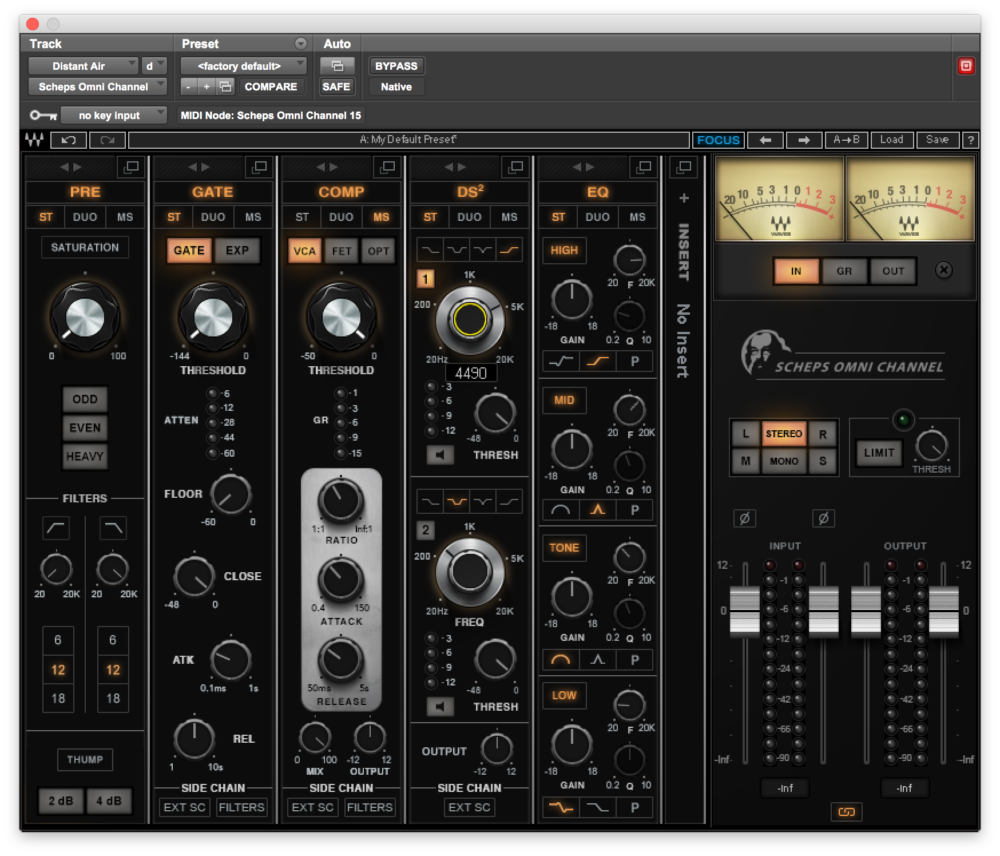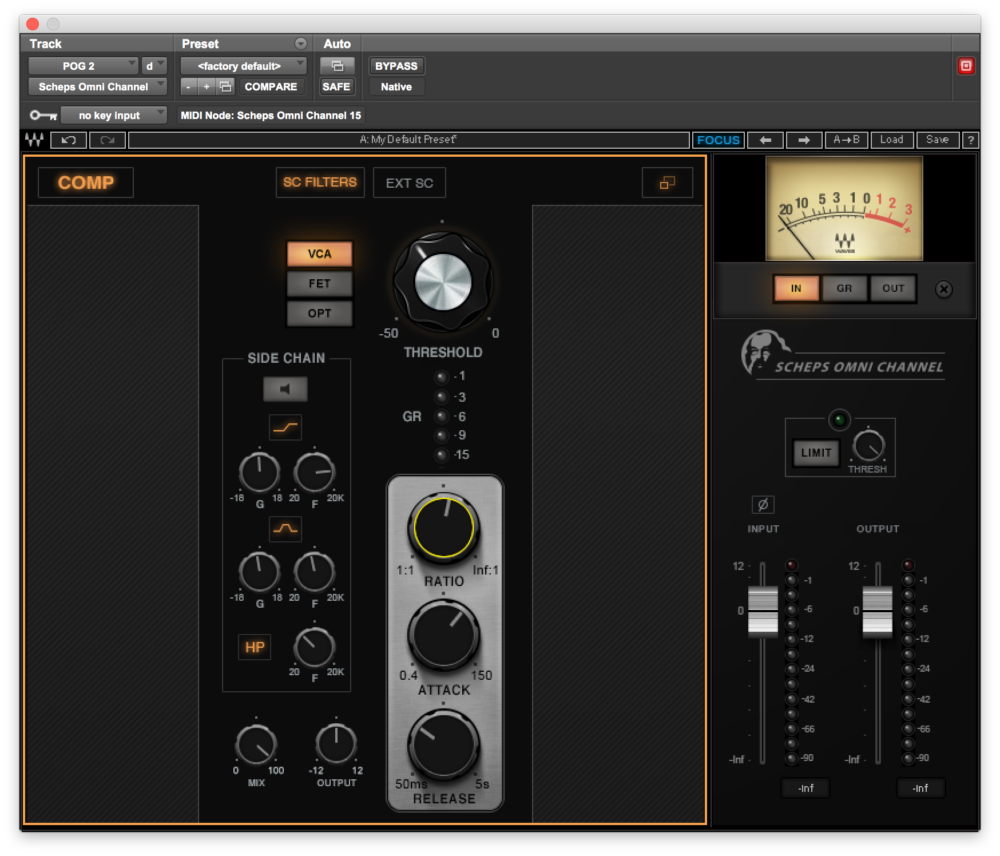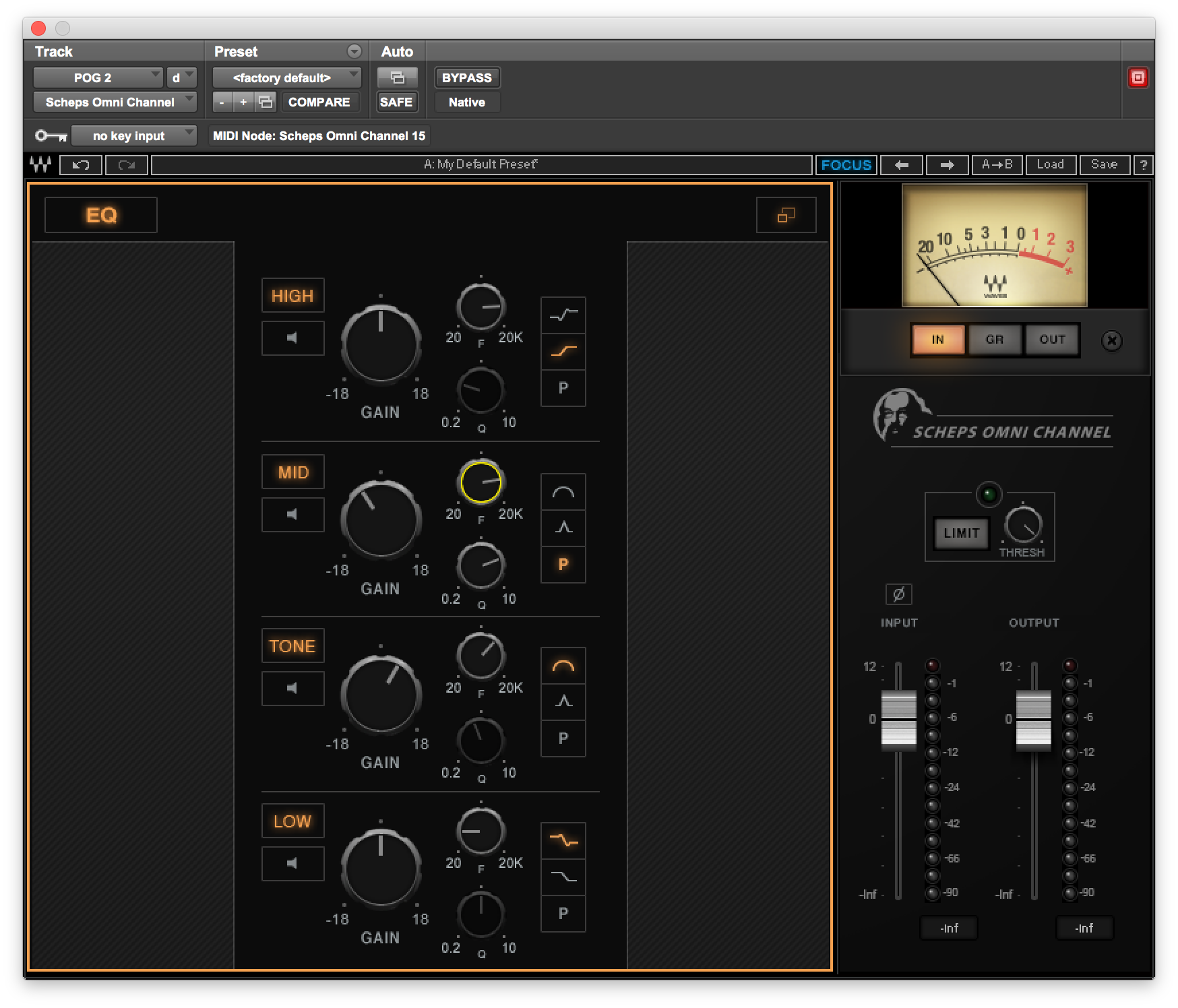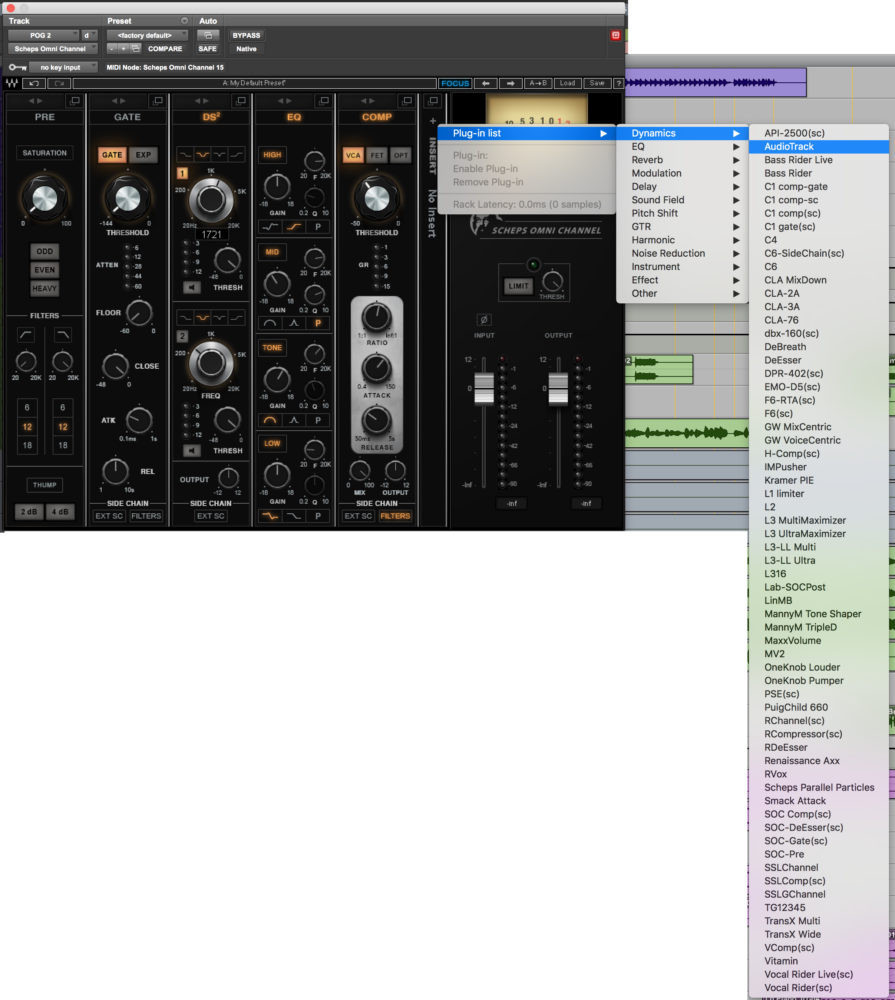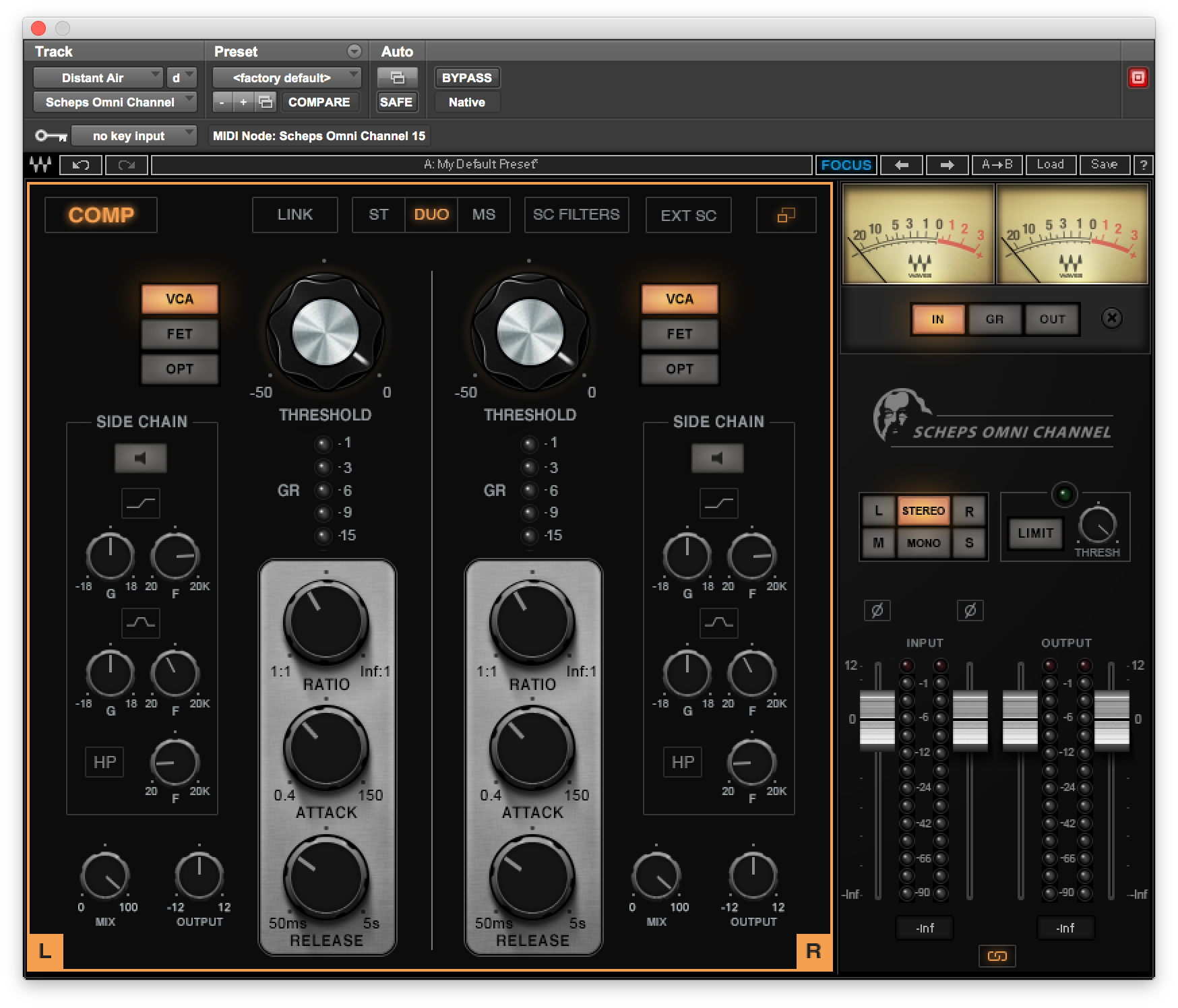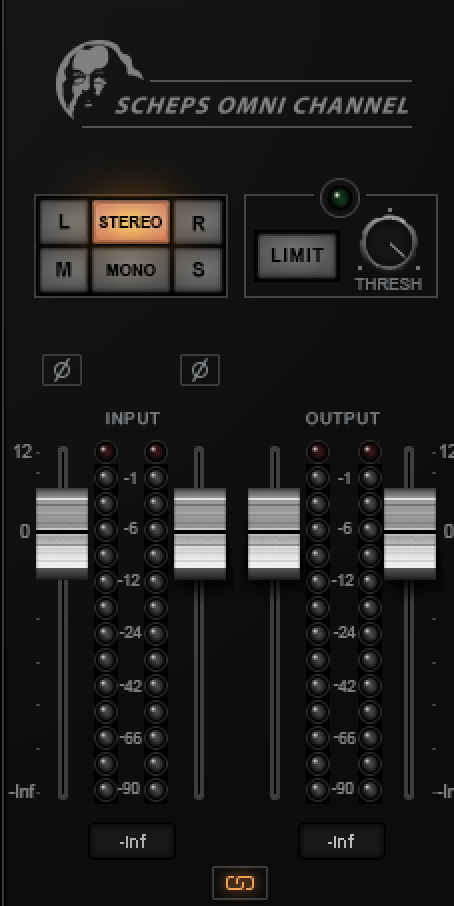Inventor Insights: Expert Tips from Andrew Scheps for the Scheps Omni Channel Plugin
A plugin playground – that may be where a mixer feels like they’ve landed with the Scheps Omni Channel.
But once all the possibilities of this versatile tool sink in, ITB-heads just want to go to work with it. Designed together with Waves by the GRAMMY-winning mixer Andrew Scheps, the Omni Channel incorporates everything he’s ever wanted out of a channel strip mixing for the likes of Adele, Jay-Z, Metallica, Ziggy Marley, then takes it to a new place.
“The Omni Channel originally sprouted from the idea of, ‘If you’re building a channel strip, what does it need to have?’” says Scheps and turned into more of ‘what do I want to have’. “I wanted to collect everything I might want to do in one place. It’s a pretty standard toolset in a lot of ways, but it also has options that mixers might not have been exposed to or thought of, like ‘Thump’, which is really a different kind of EQ.”
The modules of the Scheps Omni Channel comprise a preamp, compressor, EQ, gate, dedicated dual de-esser, and Master module. It also has the ability to insert an additional Waves plugin, do Mid/Side processing, use internal/external sidechain input for dynamics processing, plus a “Focus” mode which highlights key controls in a preset. The modules can be arranged in any order, and were inspired both by classic hardware units and dreamed-up inventions.
In this first in a series of “Inventor Insights” articles, SonicScoop goes straight to the creator for the inside tips that only they might know. Want a fast track to the 10,000-hour mastery level on the Omni Channel? Here are five deep discoveries Andrew Scheps himself made about his plugin while building it from scratch:
II One:
“When you hit your computer keyboard’s ‘Control’ key and then touch any control in the EQ or de-esser, it turns the plugin into a bandpass filter that’s centered around the frequency you’re at with the filter shape that’s currently selected. Having that capability in the de-esser without having to click the sidechain listen button is awesome – I use that all day.”
II Two:
“If you want to engage the EQ on the sidechain of the compressor, you can only see that if you open up the expanded compression controls. You then have access to a three band EQ with a high shelf ,mid band and high pass filter, which means you can really shape whatever’s hitting the compressor sidechain. Usually in a sidechain you just have a high-pass filter, but this setup kind of gives you another type of compression, which is different than what you’d get with multi-band compressor or a de-esser. It’s a different way to push stuff into the sidechain – it’s still a full-frequency compressor, but it’s more versatile.”
II Three:
“This one is a primary feature, but it grew out of something different than we had originally planned. The original spec was for two different EQ modules: One was surgical and was only going to cut, the other was musical and was only going to boost – that’s how I think of EQ’s. But to have two full EQ sections was going to use a lot of processor power and screen real estate.
“So we combined them, and that spawned two things. One is that every band in the EQ can be set to any frequency (20 – 20kHz) – you can have a high shelf that starts at 10 Hz if you want. The second is that every band can also be switched to a full parametric mode. So basically each band can be separately switched between one of two ‘musical’ modes or ‘surgical’ mode.
“For instance, with the Tone and Mid bands, once you decide which musical character you like better on an instrument, the other band is freed up to do any job you want. For example, you can be doing a mid boost with the Tone band, but also a mid-range notch to suck out nasty cymbals with the Mid band.
“That takes care of the musical versus surgical EQ thing, but it doesn’t take care of possibly wanting EQ before and after your compression. That spawned what might be the most powerful feature of the plugin, the movable insert point: Not only can you insert a second of any of the Omni Channel Modules, but you can actually insert any DiGiGrid compliant plugin, which includes almost every plugin Waves makes. That saves you from having to set up a complicated signal path with your modules or use multiple plugins – if you want a limiter in the chain, just pop it into the insert, and then by reordering the modules it can go anywhere in the signal path.”
II Four:
“Each of the modules can be run in stereo, duo or MS. On the surface it looks like stereo and duo are the same thing, just with unlinked controls, but it actually completely changes how all of the dynamics modules work.
“In duo, for example, the compressor changes from full stereo with a mono, summed detector signal to multi-mono compressor with separate detectors. I’ll use the compressor in this multi-mono mode often, because I don’t like the transients on one side pumping the other side. In the GUI it looks as though you’re just unlinking the controls by switching from Stereo to Duo, but the fact that it actually changes the detector is brilliant, and I think a lot of people aren’t aware of that.”
II Five:
“This last thing is a small feature, but it’s really useful — the monitor matrix on the right. Each module can be selected to process stereo, duo or M/S, but there’s no overall mode for the plugin. Using the monitor matrix you can be doing all your processing in stereo, but listen to just the ‘side’ component or vice-versa.
“I found some of my original notes for the plugin the other day. In some ways its exactly what I drew up two years ago, and in other ways its completely different. It’s been an amazing process and we’ve ended up with a plugin that I use constantly.”
- David Weiss
Please note: When you buy products through links on this page, we may earn an affiliate commission.








